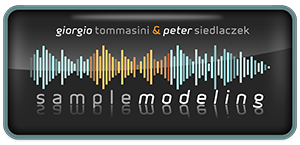Dynamic range and panning
I would like to be able to reduce the dynamic range and reduce stereo width of output and then pan the ensemble instruments. At the moment I have to use a combination of plugs to achieve this, which is much more convenient in the DAW. Is it possible to do this directly within this instrument? Would anyone else see that as a good feature?

Comments
Yes, it can be easily done. Please have a look at the manual.
Samplemodeling Customer Support
Thanks for the reply, but it is unhelpful. Perhaps you could at least point me to the page where this is discussed, as I have read the manual many times, but have yet to find the section to which you refer.
To be clear, I know abut the panning and width settings in the virtual soundstage, but found it sounded better when I panned the output. I couldn't find anything about dynamic range though. Only about timbre range.
Hi Daryl,
concerning your question about panning and width, maybe it will be helpful if I explain the way the controls in the Virtual Soundstage section work. Indeed, they work not the same as the pan knobs located outside the instruments. That´s because by panning the left and right channel at the output, you act also on the early reflection width (and internal reverb, if used). The pan and width knob in the Soundstage act on the dry components only, leaving the early reflections in their original (full) width. This is corresponding to the real stage: the width of the instrument group may vary depending on how the musicians are sitting. Not so the early reflections, which are always coming from all directions between left and right.
Of course it´s up to you which approach you prefer. Just consider that acting at the output, outside the plugin (in the mixer), you will also pan the initial room response. Doing it in the Sound Stage you will act on the instruments only. Please refer to the Manual for further details (page 18 - CC10 & CC37) . Please note that you cannot act on single musicians, but on the width of the entire "ensemble cloud" (parameter "Width") and it´s overall direction ("Pan").
Concerning your question about "reducing the dynamic range" I am not sure if I understand your question properly. Because, strictly speaking, reducing the dynamic range means only reducing the range of CC11 which controls the dynamics between ppp (CC11=0) and ff (CC11=127). "Less dynamic range" would then mean playing simply between 70 and 80, for example... But I guess you mean something different - namely reducing the volume range which corresponds to the full instrument dynamics, don´t you? Please note that we reflected the dynamic range of the real instruments. It´s neither larger, nor compressed. If you prefer a more compressed behavior - i.e. less volume change along the dynamics between pp and ff - I think you could do it by applying CC7 (volume) following the same curve as the CC11 controlling the instrument, but reversed, and made more shallow, so that you do not completely compensate any volume changes corresponding to the natural dynamics of the instruments.
Please let us know if you meant something different.
Peter
Hi Peter, thanks for the detailed reply. In terms of dynamic range, I did mean volume range, as opposed to timbre range, which is what C11 would do. There are important reasons why the volume range (let's stick to that) needs to be controllable for me. I am unable to access the volume curve controls within Kontakt. Are you saying that this should be possible? I assumed that you had locked the user out of this part of the Kontakt instrument. Ideally I'd set the actual volume to reduce, as the expression increases, so that the volume range of the instrument would be reduced. Is this possible?
Of course :-). You must simply drive the volume appropriately.
Per default, the volume of any solo or ensemble instrument can be controlled by CC7 - the standard volume controller. (What cannot be done is to manipulate separately the volume of each of the 4 modules constituting the ensembles). So using CC7 for the entire Ensemble (or a solo instrument) will allow you to compensate the volume to any degree.
If this is not working on your system, it may mean that you changed the instrument options. In this case please check the page "Controller" in the Instrument Options (not the Kontakt Options!). There, you will find the option "Accept standard controllers for Volume and Pan". It must be set exactly as follows:
1. In the solo instruments it must be selected (checked)
2. In each module of the ensembles, this option must be deactivated (unchecked). That´s because this control is achieved at the script level, and would otherwise interfere with the Instrument settings at the Kontakt level.
So CC7 is exactly what should help you to compensate the volume resulting from the instrument dynamics.
Peter